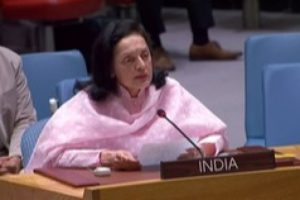The fisherman seeking a livelihood has generations of know-how and the fishery sector in India has a history as well as hope of eco-friendly fishing practices, Sustainable utilization of inland fisheries resources, brackish water fisheries and marine fisheries make up different formats of production with broader impact of uplift of socio-economic status of large numbers of people associated with it. The sector found its due importance at the highest level of executive leadership of country with the launch of the PMMSY and KCC (Kisan Credit Cards) for the fishermen community.
Additionally, there has been strengthening of end-to-end support and empowerment of fish farmers through marketing support, best practices’ dissemination, digital knowledge, access to tech infrastructure (ras, Biofloc, Cage culture), logistics like cold chain transport, and input support through collectivization to achieve more crop per drop. To give readers an idea, more than 39 lakh people were associated in fisheries activities in Uttar Pradesh alone in 2019-2020.
Adding other states, one can guess the total number of people in the country who gain their livelihood from fisheries. However, despite the enormous potential (from international demand of inland and marine fisheries, of ornamental fish and of shrimp from India), the growth in fisheries production is stagnant, the share on shelves abroad is limited, and the social upliftment of the fishing community is not uniform across the country.
The second issue is that each cog in the wheel (the scholars in fisheries universities, the corporate agrovet ventures, government departments, different sectoral agencies and the fisherfolk themselves) appear to have built their own walls. The third issue is that not just the quantity of fisheries cooperatives, but their texture is also changing. The Fish Farmer Production Organisations (FFPO) scheme under PMMSY aims to have 720 such bodies from the current 90 plus. But fishermen co-operatives are faction-ridden and not fully transparent. A significant section is in need of adequate capital infusion (needed for desilting, deweeding and preventing the shift of a water body into a waste body).
This raises a question: Why does India not have a single “Amul” like cooperative in the fisheries sector? The milk producers under Amul have a feeling of “ownership” and not servitude. They are self-motivated to contribute their last remaining rupee and they are never made to feel a different level of ownership in the cooperative. FFPOs must bridge this gap overcoming the factors endemic at the community level – not so educated people to run them, presence of caste-based communities, vote bank politics, and at some places presence of musclemen. In addition, most seafaring trawlers are individually, not collectively, owned.
Universities and government departments should encompass the real experience of fisherfolk and work cohesively for improving efficiency in two different factors of production: The first is the human factor, where the endeavour must be to ensure cooperative ownership. The second is related to entrepreneurial and capital risks. The insidious weakening of the guardrails of a fragile ecology by overfishing, the aim for greater mainstreaming of aspirational potential of circular-ness and adopting a staged approach are essential.
The Policy Framework with above two factors of production need to be tailored in order to provide focused and region-specific interventions to promote and develop fisheries in different regions of India. Only by doing so can the targets of the Pradhan Mantri Matsya Sampada Yojana be achieved.
The writer, a former IAS officer, was Director of Fisheries, Government of West Bengal. The views are personal.
A version of this story appears in the print edition of theSeptember 1, 2022, issue.











